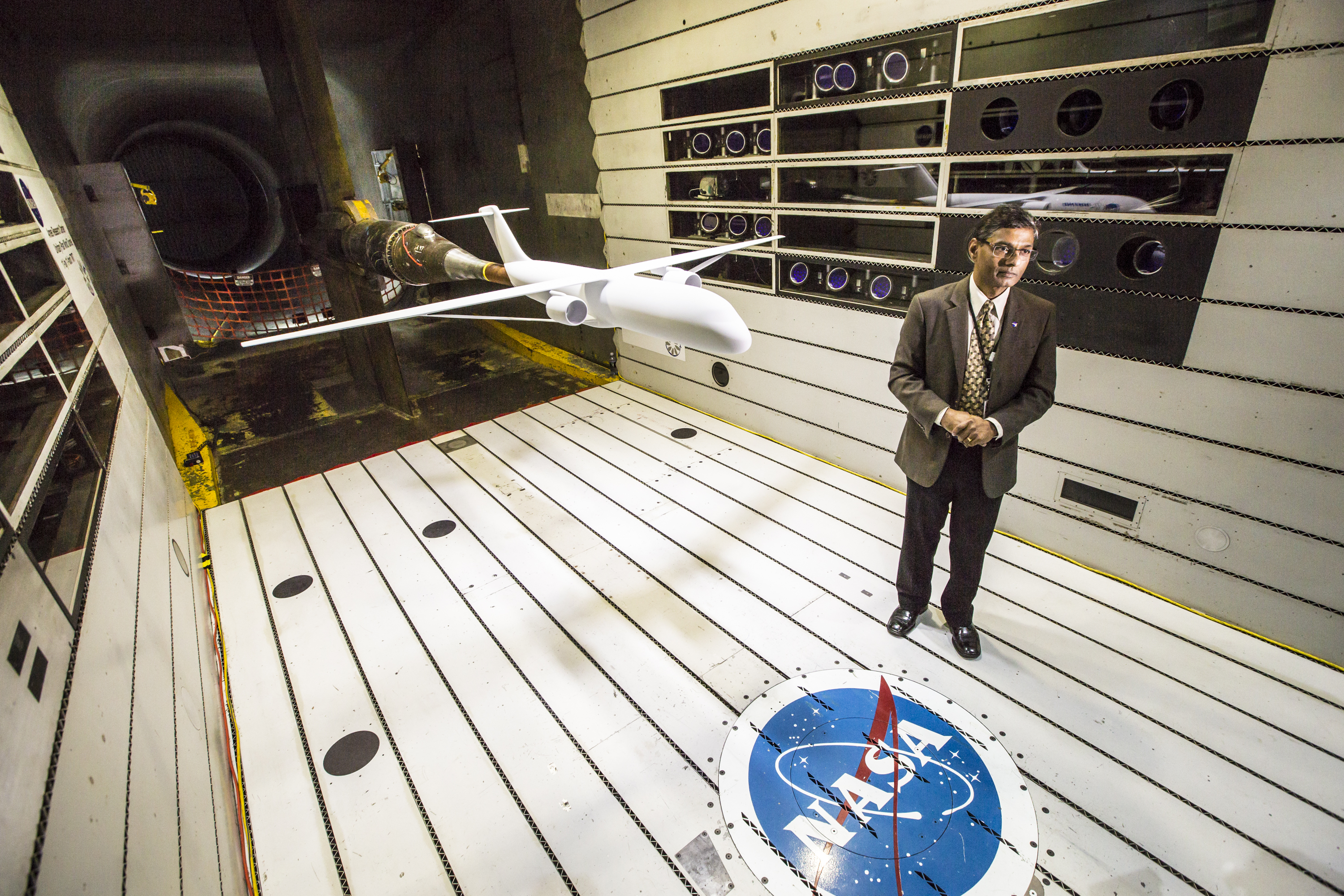In about two decades, passengers traveling on an aircraft such as a Boeing 737 will be able to experience a quicker and cleaner flight compared to current ways of commercial air travel, according to NASA.
Recently the American space agency gave reporters a glimpse into the future of commercial air travel from inside a wind tunnel at NASA’s Ames Research Center in Silicon Valley. A white, windowless, 4-foot-long model plane with higher wings than usual was suspended in the tunnel where NASA first began testing its design in winds exceeding the speed of sound.

Madavan and the model of the future 737. Image source: NASA.
“This particular airplane could knock the socks off of a Boeing 737,” NASA's Nateri Madavan, a project manager at Ames overseeing the plane's design, told CNET. “It will cut fuel use by more than 50%. It will cut emissions by more than 80%. It'll cut noise by a factor of six. It's truly a revolutionary airplane.”
Although NASA is the agency in charge of sending us to space, it has earthly concerns. The 58-year-old program is planning to land humans on Mars in the 2030s, but it’s also focused on upgrading the commercial jet for the 21st century before anyone else.
The space agency predicts that twice as many people will be getting on airplanes by 2030, which means more fuel consumption and carbon emissions. There is also lots of money on the line. Rising demand for commercial planes has been beneficial for US-based Boeing and Europe-based Airbus Group in recent years. For example, as orders for military planes faltered in 2014, Airbus saw a 60% increase in profit last year because of strong demand for passenger jets.
Beyond traditional competitors like Airbus, the U.S. is facing newcomers such as China and Japan, who are competing for a piece of this market. Basically, NASA wants to tip the scales of the global jet race toward the U.S.
Particularly, NASA has been focused on overcoming the roaring sonic booms created by planes exceeding the speed of sound. The agency believes that fixing this problem could make supersonic commercial jets a viable option.
The design of the future 737, first unveiled on February 18, came from a group led by Boeing as part of an effort dubbed SUGAR, which stands for Subsonic Ultra Green Aircraft Research. The US Air Force and General Electric are also part of the group, which set out to create a plane to replace the 737 that has been manufactured by Boeing since its 1967 debut.
NASA’s 737 replacement achieves the efficiency and quiet that eludes current models by using narrower, longer wings. To support the longer wingspan, the model plane uses struts, or trusses, connecting the underbelly of the plane to the wings.
According to Madavan, the future 737 could travel at three-quarters the speed of sound, or about 576 miles-per-hour, which is about how fast the current 737 travels. However, Madavan expects the redesigned plane could travel even faster, reaching 652 miles-per-house, or about 85% of the speed of sound.
Source: CNET
Advertisement
Learn more about Electronic Products Magazine





